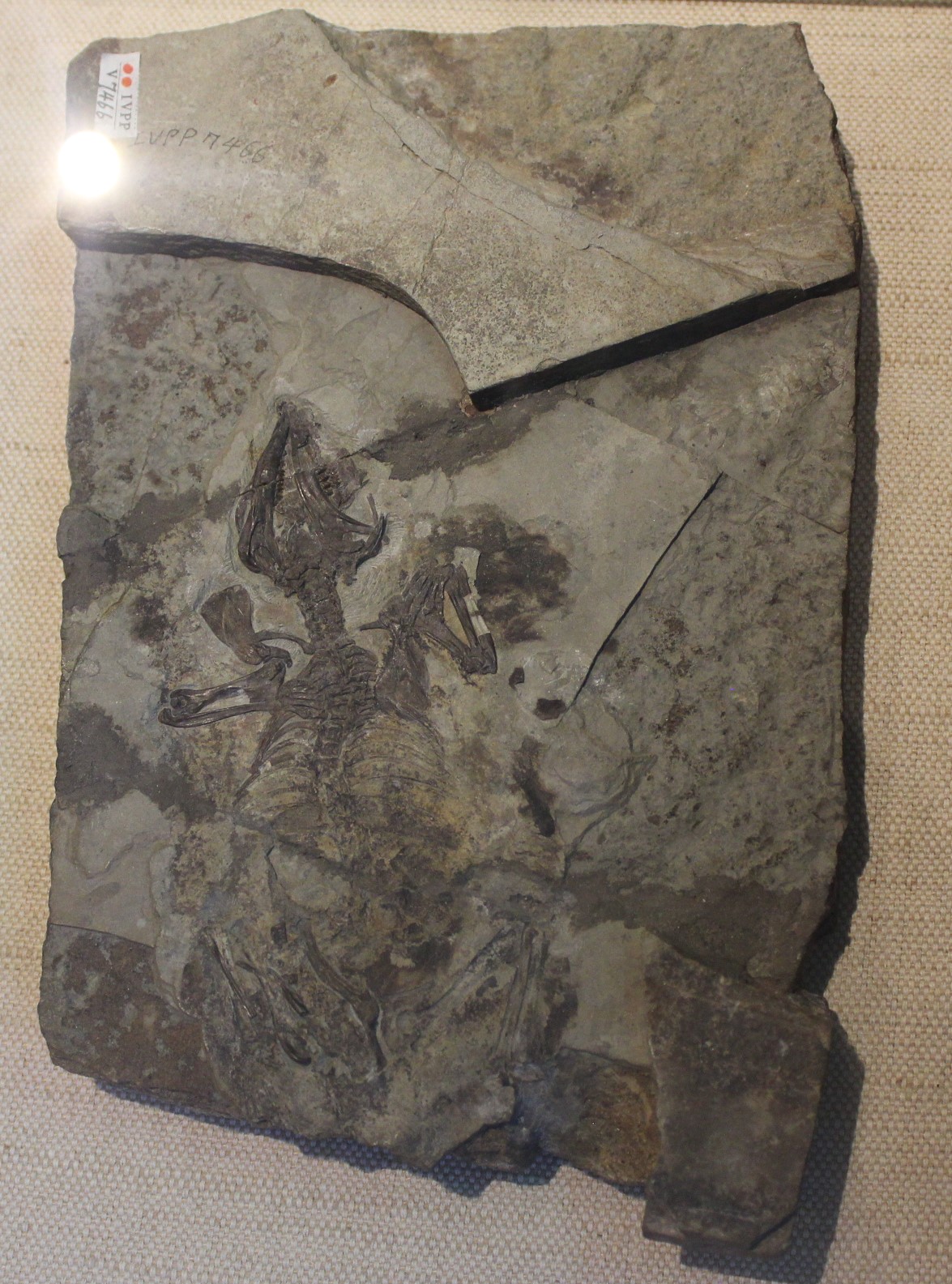Zhangheotherium on:
[Wikipedia]
[Google]
[Amazon]
''Zhangheotherium'' is a 
 Symmetrodonts and other archaic mammals such as
Symmetrodonts and other archaic mammals such as
genus
Genus ( plural genera ) is a taxonomic rank used in the biological classification of extant taxon, living and fossil organisms as well as Virus classification#ICTV classification, viruses. In the hierarchy of biological classification, genus com ...
of symmetrodont, an extinct order of mammal
Mammals () are a group of vertebrate animals constituting the class Mammalia (), characterized by the presence of mammary glands which in females produce milk for feeding (nursing) their young, a neocortex (a region of the brain), fur or ...
s. Previously known from only the tall pointed crowned teeth, ''Zhangheotherium'', described from Liaoning
Liaoning () is a coastal province in Northeast China that is the smallest, southernmost, and most populous province in the region. With its capital at Shenyang, it is located on the northern shore of the Yellow Sea, and is the northernmost ...
Province, China
China, officially the People's Republic of China (PRC), is a country in East Asia. It is the world's most populous country, with a population exceeding 1.4 billion, slightly ahead of India. China spans the equivalent of five time zones and ...
, fossil
A fossil (from Classical Latin , ) is any preserved remains, impression, or trace of any once-living thing from a past geological age. Examples include bones, shells, exoskeletons, stone imprints of animals or microbes, objects preserved ...
s in 1997, is the first symmetrodont known from a complete skeleton. It was dated to between 145 and 125 million years ago in the Cretaceous
The Cretaceous ( ) is a geological period that lasted from about 145 to 66 million years ago (Mya). It is the third and final period of the Mesozoic Era, as well as the longest. At around 79 million years, it is the longest geological period of th ...
. A single species
In biology, a species is the basic unit of classification and a taxonomic rank of an organism, as well as a unit of biodiversity. A species is often defined as the largest group of organisms in which any two individuals of the appropriate s ...
, ''Zhangheotherium quinquecuspidens'', is known.
 Symmetrodonts and other archaic mammals such as
Symmetrodonts and other archaic mammals such as multituberculate
Multituberculata (commonly known as multituberculates, named for the multiple tubercles of their teeth) is an extinct order of rodent-like mammals with a fossil record spanning over 130 million years. They first appeared in the Middle Jurassic, a ...
s and monotreme
Monotremes () are prototherian mammals of the order Monotremata. They are one of the three groups of living mammals, along with placentals (Eutheria), and marsupials (Metatheria). Monotremes are typified by structural differences in their brain ...
s are still being debated on their taxonomical relationships. ''Zhangheotherium'' has many primitive characteristics. Among them is a spur at the foot, seen today in the modern platypus
The platypus (''Ornithorhynchus anatinus''), sometimes referred to as the duck-billed platypus, is a semiaquatic, egg-laying mammal Endemic (ecology), endemic to Eastern states of Australia, eastern Australia, including Tasmania. The platypu ...
. In addition, it walked with a reptilian sprawl, like monotreme
Monotremes () are prototherian mammals of the order Monotremata. They are one of the three groups of living mammals, along with placentals (Eutheria), and marsupials (Metatheria). Monotremes are typified by structural differences in their brain ...
s and many Mesozoic
The Mesozoic Era ( ), also called the Age of Reptiles, the Age of Conifers, and colloquially as the Age of the Dinosaurs is the second-to-last era of Earth's geological history, lasting from about , comprising the Triassic, Jurassic and Cretaceo ...
mammals such as ''Jeholodens
''Jeholodens'' was a primitive mammal belonging to the order Eutriconodonta, and which lived in present-day China during the Middle Cretaceous about 125 million years ago.
Only one specimen has been formally described. This specimen (the holotyp ...
'' and ''Repenomamus
''Repenomamus'' (Latin: "reptile" (reptilis), "mammal" (mammalis)) is a genus of opossum- to badger-sized gobiconodontid mammal containing two species, ''Repenomamus robustus'' and ''Repenomamus giganticus''. Both species are known from fossils f ...
''. Recent studies show that it led a possibly scansorial lifestyle, possessing long hindlimbs and a large plantar area on the foot, both optimal for climbing.Meng Chen, Gregory Philip Wilson, A multivariate approach to infer locomotor modes in Mesozoic mammals, Article in Paleobiology 41(02) · February 2015
The specimen GMV 2124 of the feathered dinosaur '' Sinosauropteryx? sp.'' contained two jaws of ''Zhangheotherium'' in its stomach region (Hurum ''et al.'' 2006). Thus, it seems to have preyed on this primitive mammal, possibly on a regular basis.
References
*Hurum, Jørn H.; Luo, Zhe-Xi & Kielan-Jaworowska, Zofia (2006): Were mammals originally venomous? ''Acta Palaeontologica Polonica'' 51(1): 1–11. {{Taxonbar, from=Q15298265 Early Cretaceous mammals of Asia Fossil taxa described in 1997 Prehistoric mammal genera